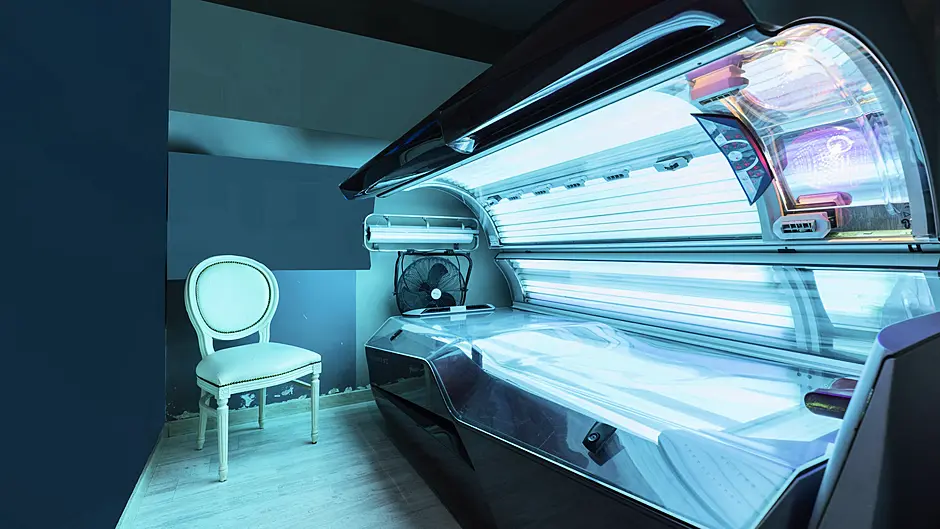Phototaxis is a word used in science to describe a creature that is attracted to sunlight.
These creatures include flies, moths, bees, jellyfish, larva and in the last 100 years, us, human beings.
The history
The sun gives off UV light, and some inventors saw this as a money-making opportunity. In 1934, William F Folmer and Harrison L Chapin were awarded a patent for the world’s first electric insect killer.
The ‘bug zapper’ used UV light to attract flies towards a fatal electric shock. This blue light design is still common in shops and restaurants today.
Later on, a German scientist named Friedrich Wolff saw that fashion and society were changing. Fredrick experimented with UV light on humans, creating the first modern sunbed.
Up until a century ago, pale skin was always a symbol of wealth and the aristocracy.
However, in 1923, fashion designer Coco Chanel accidentally popularised the tan.
After getting sunburnt on her yacht in the French Riviera, her bronzed skin became a symbol of health, leisure, and sophistication upon her return to Paris.
The modern tan was born.
The benefits of sun
As Swiss doctor Paracelsus said in the 15th century, ‘All things are poison … the dose alone makes a thing not poison.’ Sunlight is important. It helps our bodies make vitamin D, which is essential for our bones.
It also makes us feel good, probably through the production of the ‘happy chemical’ serotonin.
The risks of sun
However, too much UV light causes cancer and can age our skin faster.
It can make us look 80 by the time we are 45. DNA is our cells’ instruction manual. UV light damages DNA. This can make our skin wrinkled, leathery, or even cancerous.
Skin cancer is the most common cancer in Ireland. Thankfully, most skin cancers are often straightforward to fix.
Melanoma, a more dangerous type of skin cancer, has more than doubled in incidence in Ireland over the last 20 years.
It’s expected to double again by 2040, especially among men.
Repeated sunburns before the age of 20 increases the risk of melanoma later in life by up to 80%.
Sunscreen can protect against this. Though some people are naturally more susceptible to melanoma, approximately 86% of cases are potentially preventable.
Sunbeds
The sunbed industry is worth billions but increases skin cancer risk and accelerates skin aging.
Many believe sunbeds are safer than natural sun exposure, but this is false.
Regular sunbed use increases melanoma risk by 75%, especially if use starts young.
Myth busting
Sometimes you hear about people getting a ‘base tan’ before they go on holidays.
Many believe that this protects them from getting burnt. This is also simply not true. I’ve also read about some celebrities recently explaining that they use sunbeds for certain skin conditions such as psoriasis. Light therapy, called phototherapy, is used by hospital specialists but is not the same as using a sunbed.
Phototherapy uses specific types of UV light in small, controlled doses, which are different from the ones used in sunbeds.
Some people say that they use sunbeds as a source of vitamin D.
While we do need a little vitamin D for our bones and teeth, we generally store enough in our bodies for about one to two months.
Our skin makes vitamin D when it is exposed to a certain type of UV light.
However, sunbeds mostly use a different type of UV light which doesn’t produce vitamin D.
Fish, dairy products, and some breakfast cereals are great sources of vitamin D.
Equally, after consulting with your doctor or pharmacist, a vitamin D supplement might be an option.
What sunbeds do
So, what do we get from sunbeds? A big international study found that using sunbeds increases your cancer risk with every session.
The World Health Organization lists things that can cause cancer as carcinogens.
The highest risk group, group one, includes things like cigarettes, asbestos, and yes, sunbeds.
When you use a sunbed, you put a lot of trust in it to give you safe radiation levels.
But a study in England found that nine out of 10 sunbeds gave off UV radiation above safe limits. A similar survey in Northern Ireland also raised safety concerns.
So, enjoy the sun when we get to see it. High factor sunscreen is your friend, helping to prevent both cancer and premature aging.
UV light has its uses, but honestly tanning isn’t one of them. Just like the smart fly, ignore that blue light, walk on.
Know the facts - own your risk – decide for yourself.











